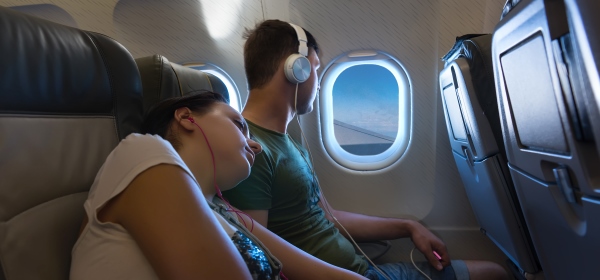My husband usually has very little to do with organising an overseas trip. He just packs, we head to the airport, and he heads to the bar to calm his nerves.
He hates flying. He puts on the headphones and watches movies to block out the murmur of the engines, the bumps and vibrations. Once, while en route from Dubai, he did not move from his seat for the full 15 hours. As a result, he arrived more jet lagged than he should. That’s because stress doesn’t help.
I’m hoping one day he will see the light, because light is a key to minimising jet lag. His fear of flying is another matter.
Jet lag is a result of our body clock taking time to adjust after rapid travel across two or more time zones. The symptoms subside when the body synchronises to local time.
To ease his stress, I could draw his attention to these stats:
- You are 22 times more likely to have a car accident on the way to the airport than be involved in a plane crash;
- Your odds of being involved in a plane crash are about one in three million, and you would need to fly once a day for 8200 years to notch up three million flights;
- About three million people fly safely every day;
- A plane takes off safely somewhere every two seconds.
But I know his routine: the headphones, perhaps a glass of wine, perhaps a sleeping tablet prescribed by his doctor, shoes off and focus on the little screen.
But back to the jet lag and light.
Light is at the forefront of research into ways to minimise jet lag. Who saw the vision of the Socceroos returning from Honduras after the first leg of their World Cup qualifier? Many were wearing special glasses, known as Re-Timer glasses, that appeared to be emitting a blue-green light.
The Re-Timer glasses were developed by researchers at Flinders University in Adelaide. The blue-green light suppresses the production of melatonin, the hormone that induces sleep – that’s right, induces sleep.
The Socceroos were encouraged to wear the glasses during the first leg of their return – to keep them awake – before taking them off and sleeping on the second leg to quickly reset their body clocks. It’s all about getting your body in synch with the time at your destination.
Researchers say that the glasses are not a “quick-fix” but are helpful.
Sleep Health Foundation chair Professor Dorothy Bruck says such products work well in specific situations.
“Jet lag responds very well to light and the blue-green light the glasses use is at exactly the right wavelength to reset the circadian rhythms,” she said.
She warned that it was important to get advice about when to wear them to get the best result.
Another method to minimise jet lag – that doesn’t require the purchase of Re-Timer glasses – is to progressively reset the body clock to the destination time zone before you travel. Experts say the body clock can shift one hour per day, and that even if you only partially shift your sleep–wake schedule over several days, the effects of jet lag will be reduced.
That’s a bit of a task if you are flying to New York, which is 14 hours behind Australian east coast daylight saving time.
When you arrive, slot straight into the local time. If it’s night, go to bed. If it’s morning, get out and about. And walk, because exercise and sunlight will help.
In the end, nothing will eliminate jet lag. All you can do is limit the pain.
Do you have any tips for jet lag?
Related articles:
Strategies to avoid jet lag
Natural cures for jet lag
Air quality and jet lag

